2020 Triumph Tiger 900 Rally Pro Review
Motorcycle Test By Vicko – Images by Rob Mott
I’ve made no secret of the fact that I’m a big fan of the Tiger middleweight platform. My own ‘gen 1’ 800xc has been an absolute workhorse and I have clocked up 260,000 kilometres since buying it new. Sure, it’s starting to feel a little loose now but I still love it. Great overall balance, a capable engine, driveline without much fault and terrific throttle feel (the first generation still had a cabled throttle which was much better than the subsequent couple of attempts at fly by wire). It must be said though that quite a few times over the seven years of ownership I’ve wondered what it might be like with ‘just a bit more grunt and a bit less weight’.
I don’t have to wonder anymore.
Triumph have overhauled the smaller of the two Tiger offerings, not only giving it a styling update (aligning it more closely with its bigger 1200 brother), but letting the engineers loose on almost every aspect that counts. I had the chance to live with the top spec’ Rally Pro model for a couple of weeks and rode it in a variety of conditions, comparing it directly with my old bike. Unlike the last couple of updates that didn’t have me eyeing off the new metal in serious envy, this new bit of kit has moved the game on considerably. Envy mode has now been properly engaged.
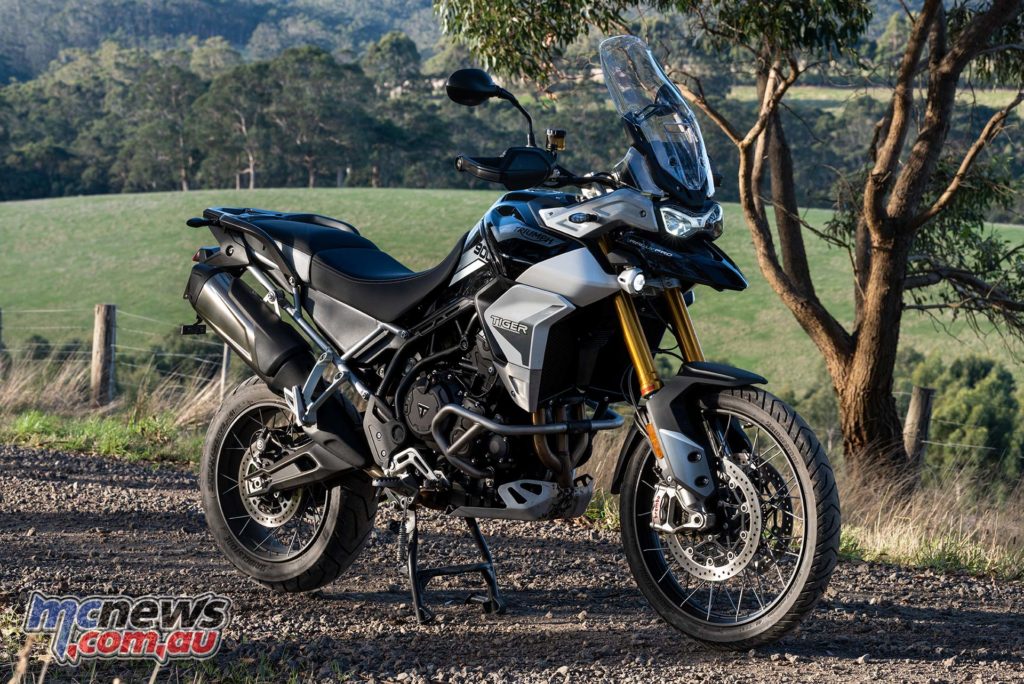
Trev has covered the major technical points in his earlier piece here (Link), but to summarise – it’s a little lighter, the engine has been upped to 888cc with a new firing order courtesy of a ‘T plane crank’ which favours more torque, better low end feel and traction. The new donk is also repositioned slightly in the frame. The new Rally Pro comes with quick shifter, ABS, TC, a new TFT screen with phone connectivity for GPS-SMS-music and even GoPro connectivity (I shit you not), six pre-set ride modes plus a configurable ‘Rider’ mode, Showa forks and shock, Brembo monobloc brakes, heated grips and seats, tubeless wheels with pressure monitors, LED lights and a bunch of new componentry including crash protection. It’s a serious update. And it’s seriously specced up.
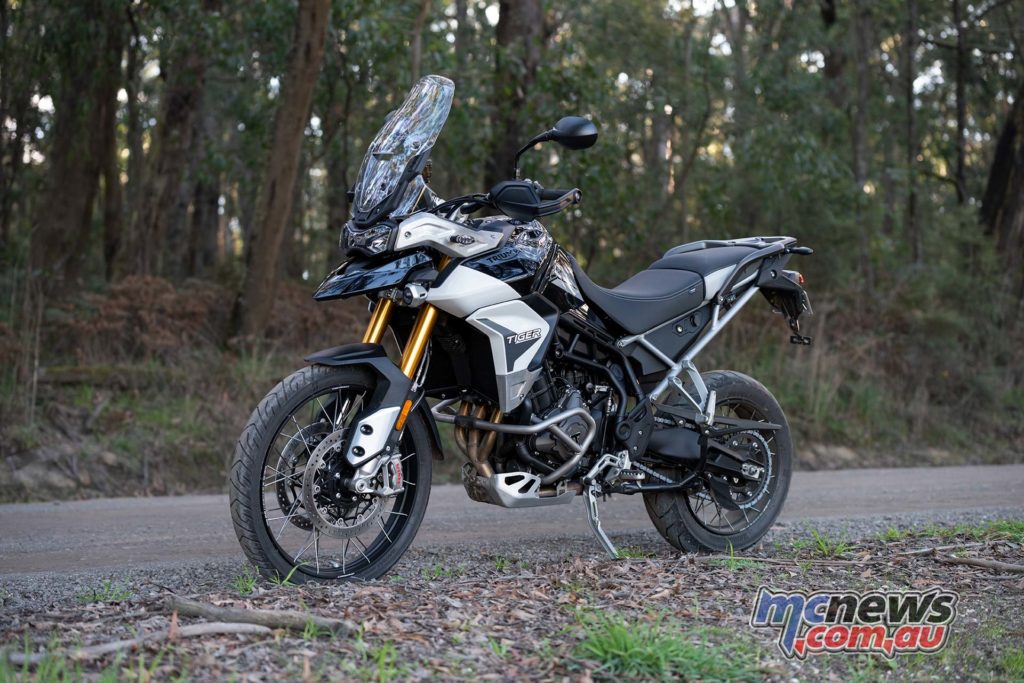
First up – styling wise, I rate it. It doesn’t look massively different to the early prototype that Felipe Lopez ran to second in class in the Pan African Rally in 2018. I get that looks are subjective, but it really does have the ‘I can take you anywhere’ thing going on, without looking overdone. Fit and finish is generally excellent, although I did note a couple of the smaller brushed alloy trim features that I reckon will show marks relatively easily – behind the front indicators for example. Overall though, it drips of build quality and detail, right down to the nice stitching in the seats. Classy. The colour schemes seem to highlight the trellis frame a little more too which I like.
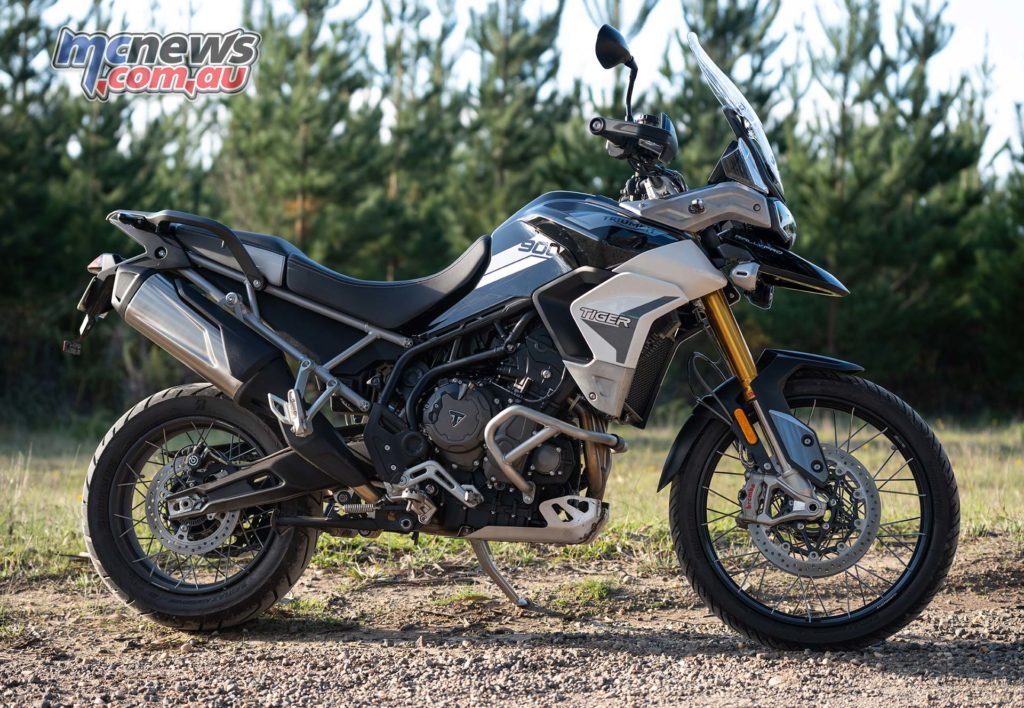
Throwing the leg over feels familiar and new at the same time. Slightly thinner tank shape between the knees perhaps and slightly different seating ergos, but the new seat feels just as comfy on longer hauls as the older shape and from my impressions favours off-road usability in moving your weight around more easily, particularly moving it up and forward. Nice.
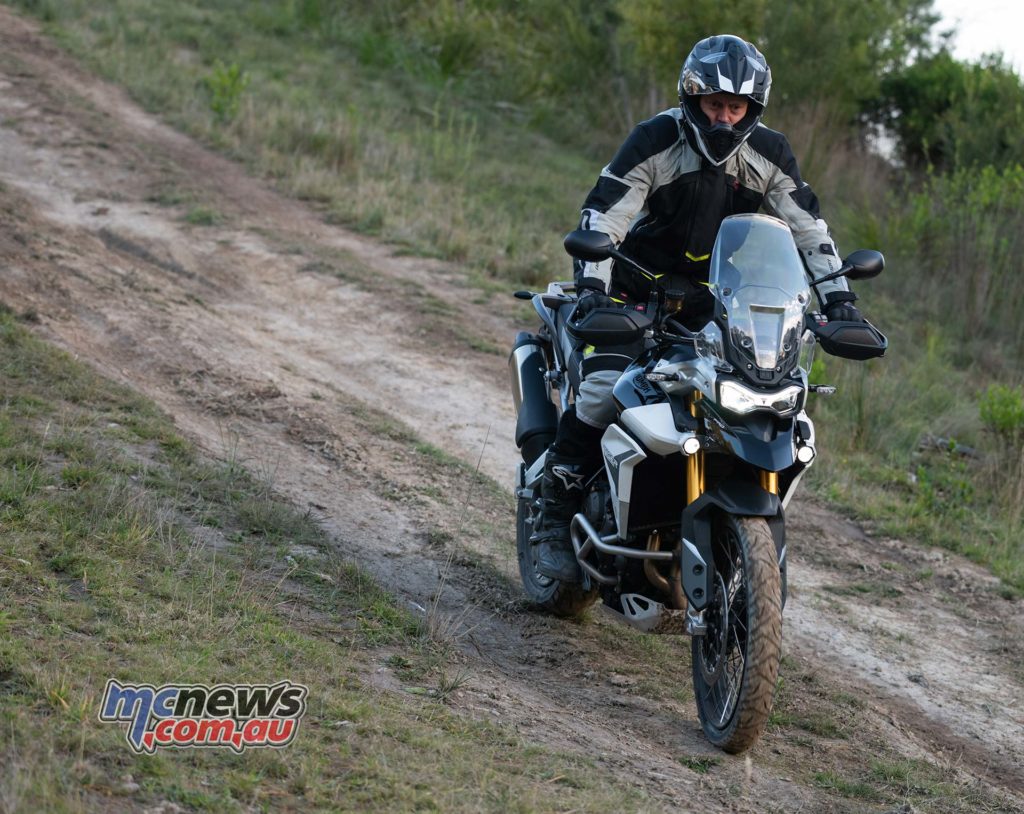
Switchgear is all fairly well positioned and has a good feel (illuminated too – tick). Although a couple of them take some getting used to. The spotlight and heated seat switches are located way over the front where you can’t see them without moving well forward. There are ten buttons on the left hand side alone so that side gets a bit crowded… Not that you’d use it much. Just set it and forget mostly – it only runs the spotties on high beam and automatically flicks them off when you change to low beam. The indicator button could also use a smidgen more tactile feedback for my liking, but location and function are ok.
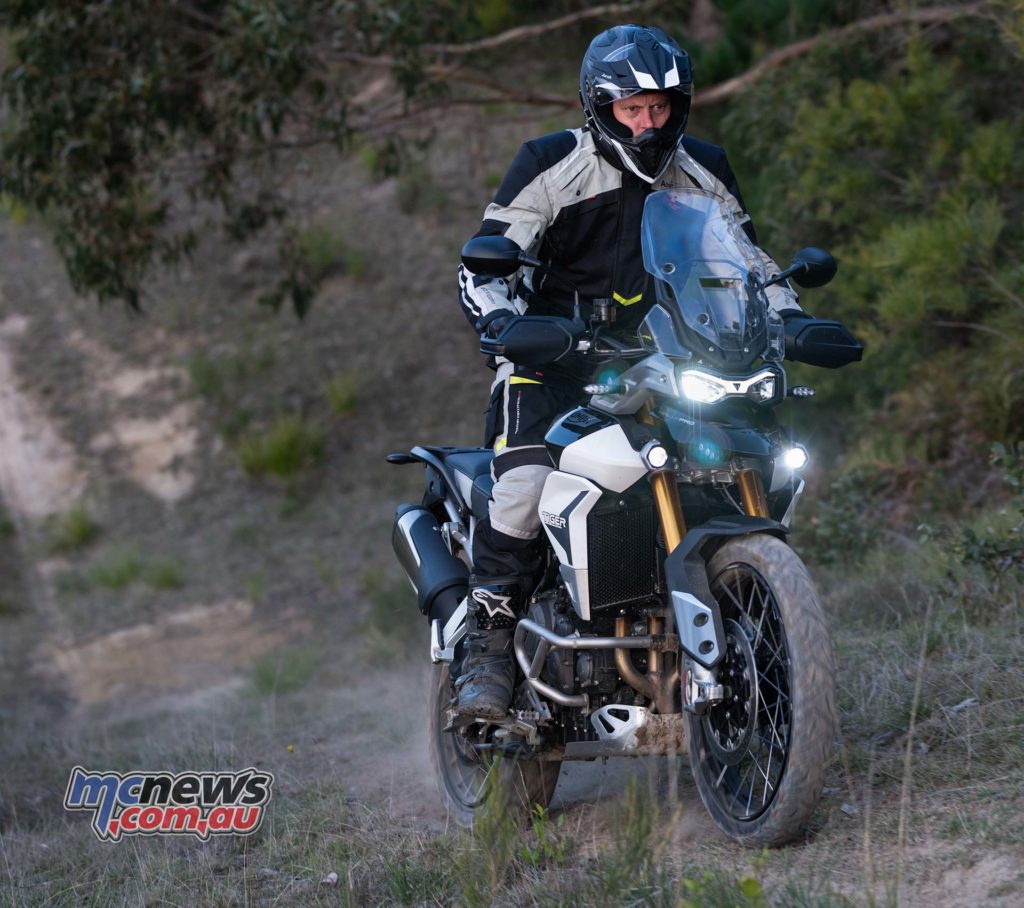
Key in – dash does a little greeting routine while the electrics take a few seconds to sort themselves out, then you fire it up and are immersed in that new uneven triple exhaust note. For a stock pipe, it’s up there with the best. It has a more distinctive, guttural growl than the old firing order and definitely brings a smile to the dial. It’s almost as loud as my Arrow slip-on on the 800… not quite… but I like the new note more. It’s a winner. The new uneven crank does kind of the same thing to a triple that a cross plane crank does to an in-line four. And I’ve raved incessantly about how much I like the cross plane R1 engine… This new crank in the 900 triple? Love it, love it, love it. And then love it some more.

On the road you notice the extra shove off the bottom and in the mid range, paired with the excellent, super slick quick-shifter and slipper clutch that was faultless in both directions it makes for an effortlessly rapid ride. In fact I reckon it’s one of the nicest quick-shift set-ups I’ve ridden. It feels like much more of a bump up in power than the 10 per cent quoted too. Cruising along I found myself often short shifting up at around four or five-thousand revs, just riding the torque wave and listening to the burble. It has such a lovely character.

I wonder if they’ll use that same crank set-up in future versions of the Speed Triple. That’d be a thing… Up higher in the rev range it didn’t feel all that different to the old 800 engine to be honest which is no bad thing at all, but down low there’s a noticeable improvement. And unless you’re on full charge on the tarmac you’re probably not going to be bouncing up near the rev-limiter on this Rally Pro version anyway. There’s a bit more engine tick noise – it’s not as smooth as the old firing order, but I didn’t have any issues with vibes at all.
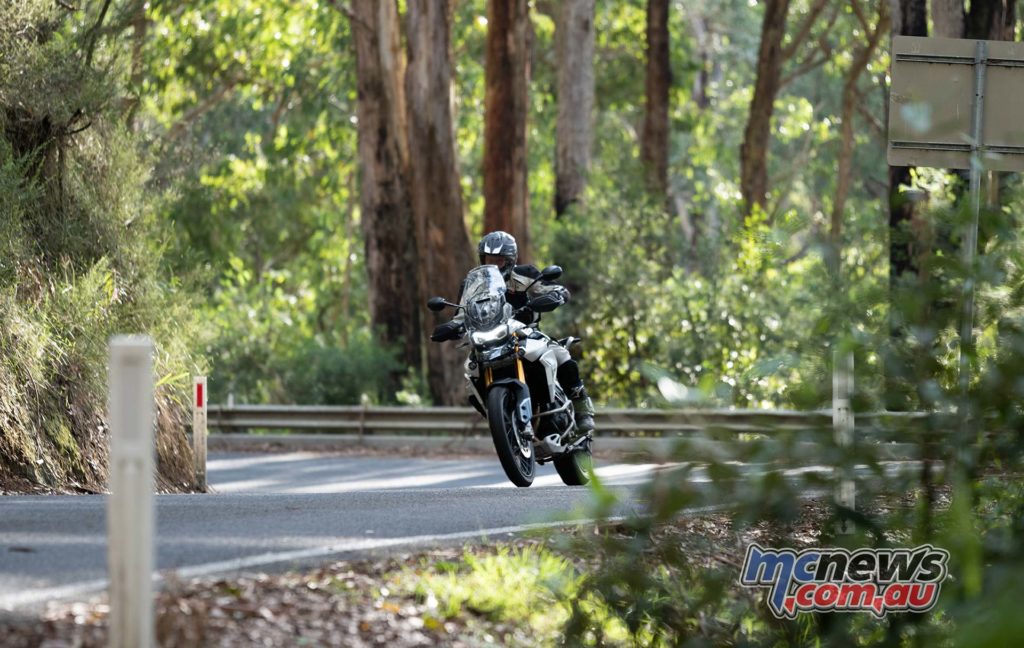
It was actually when away from the sealed stuff though that I noticed the biggest differences with the feel of the engine. Much improved low down feel and despite having more torque it seemed easier to ride on gravel and dirt and any sort of lower speed off-road type stuff. Almost twin-like in power delivery down low compared to the old crank. Totally confidence inspiring in terms of hooking up – even if the unit I sampled came with relatively road oriented Battlax Adventure hoops which I thought was a little odd for the ‘Rally Pro’ model. Would have liked to get some more aggressive knobbies on there… next time perhaps.
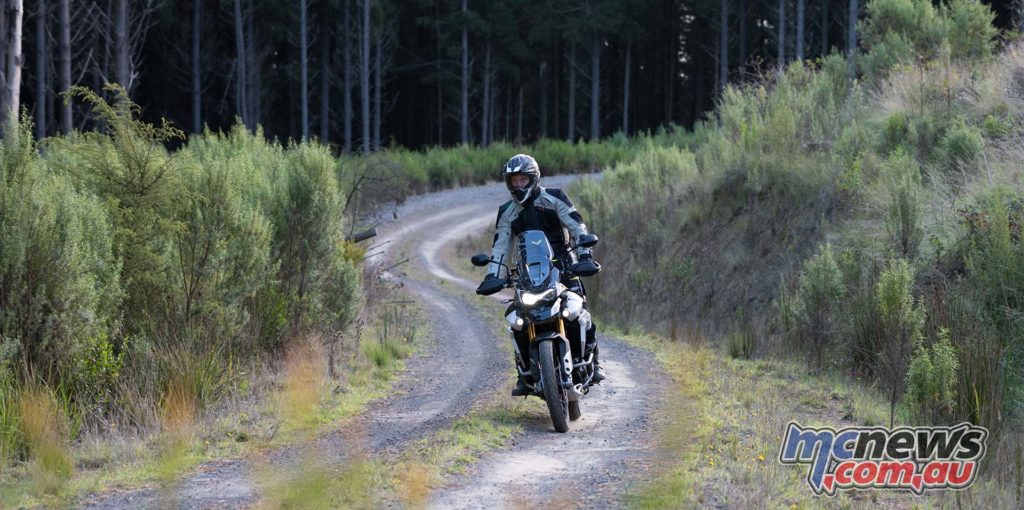
It’s worth mentioning for those who’ve yet to throw a leg one that the triples are a little wider than say, an 850 GS between the knees. But I really don’t see it as an issue. It’s not a limitation in any way for a bike of this size and type.
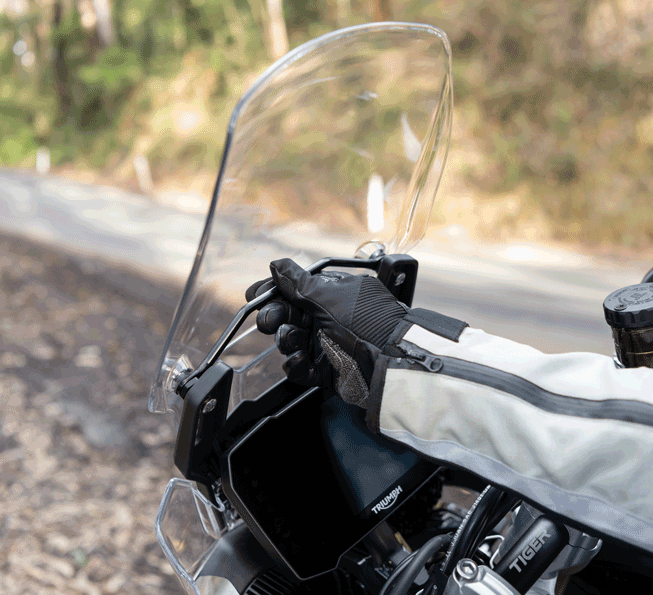
Keen eyes will also spot the new adjustable front screen as it now has a nice little crossbar for you to push forward and adjust the height in one simple motion. Works nicely at full height too. No buffeting on the go which can be noticed by the taller riders amongst us on the older versions.
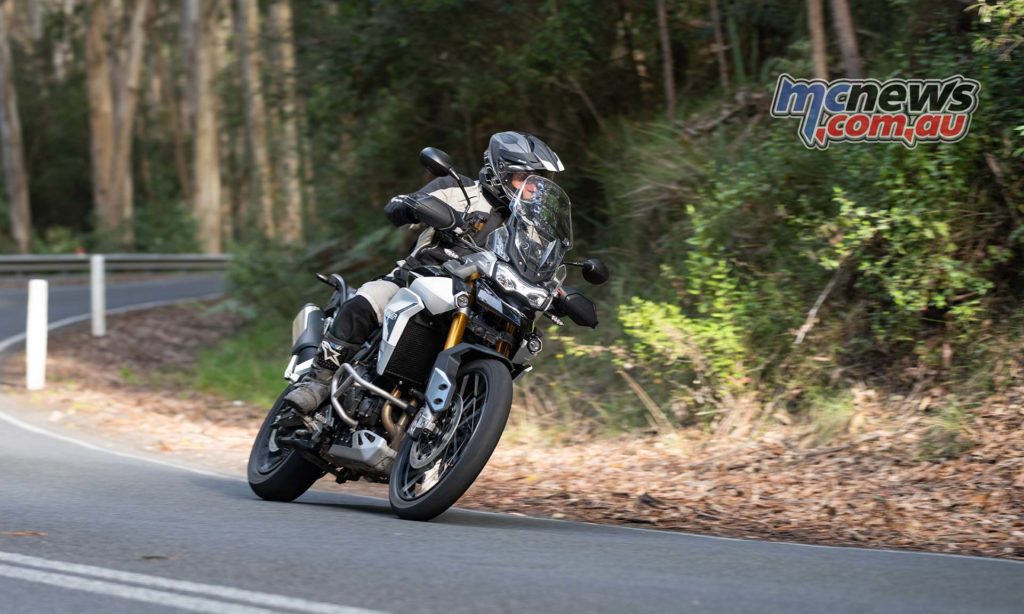
The Showa kit at both ends also proved to be outstanding both on and off road. Both ends adjustable, the rear even with a remote pre-load adjuster with-in hands reach. Not that I needed to use it as I only rode solo and never loaded it up. Great progressive feel and feedback – again, most noticeable off-road in terms of the improvement over previous models. On the road it feels just as capable as ever, even with the 21-inch front. The amount of sportsbike riders who’ve been shown a clean pair of heels by a 21-inch fronted adventure bike with a half decent rider onboard is growing everyday…

With the combo of that great engine and suspension feel it didn’t take me long before I was playing around with lurid, long third gear slides and fish-tails (once you figure out how to turn traction control off. More on that in a bit). It’s a joy to ride a flowing twisty gravel road on, letting the rear end loose on corner exit and then having it swing back the other way. If you’re into ripping big skids with total confidence, you’ll dig this. It’s just magic. And it’ll get you a decent distance on a larger 20-litre tank too, up from 18-litres. I was seeing pretty close to the quoted ~5L/100kms mark depending on how I was riding it. Slower gravel or more hardcore off road stuff that involved more skids sipped a bit harder, but you’d still comfortably reach past 320 kilometres on smooth gravel trips including said slidey shenanigans.

The brakes are also excellent – a step up in terms of power from the previous kit – although I’d have liked a little less initial bite off road, when I had disabled the ABS. Probably only a pad change away from being perfect for serious adventure work. On tarmac they were great. I had both the ABS and TC working hard for me on the road section during the photography shoot and it was totally non intrusive and seamless. The only way I knew was the flashing light on the dash. The rear pedal gives you a little pulsing action to let you know you’re overstepping it, but otherwise you’d barely know you were being assisted.
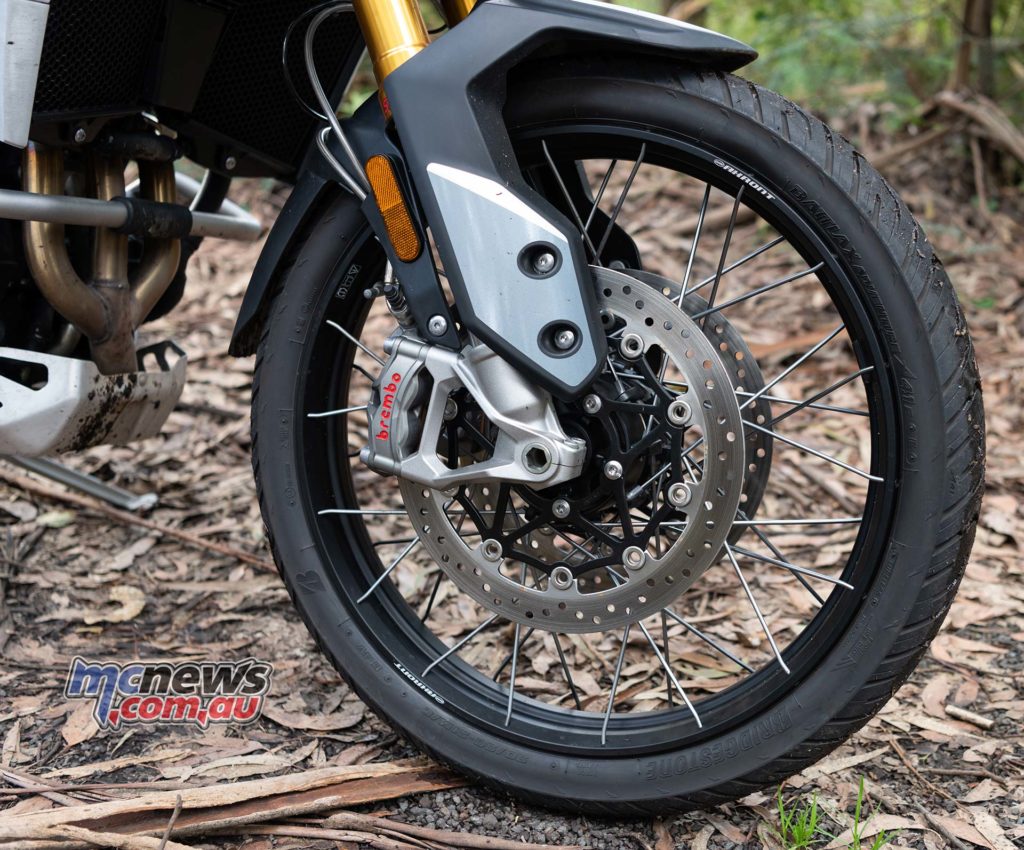
Speaking of the new dash, it’s positively massive. And the screen quality itself is excellent. Great definition and readability, non reflective surface. But.. and here’s my only real beef with the bike, the dash design and layout is.. well I used the phrase ‘this makes me want to punch myself in the face’ when describing it more than once. So here’s a bit of a rant. The digital interface designer in me can’t understand how or why some of the screens and interactions were done the way they are. Some very strange choices for information on the screen. Too many options to scroll through to find stuff.
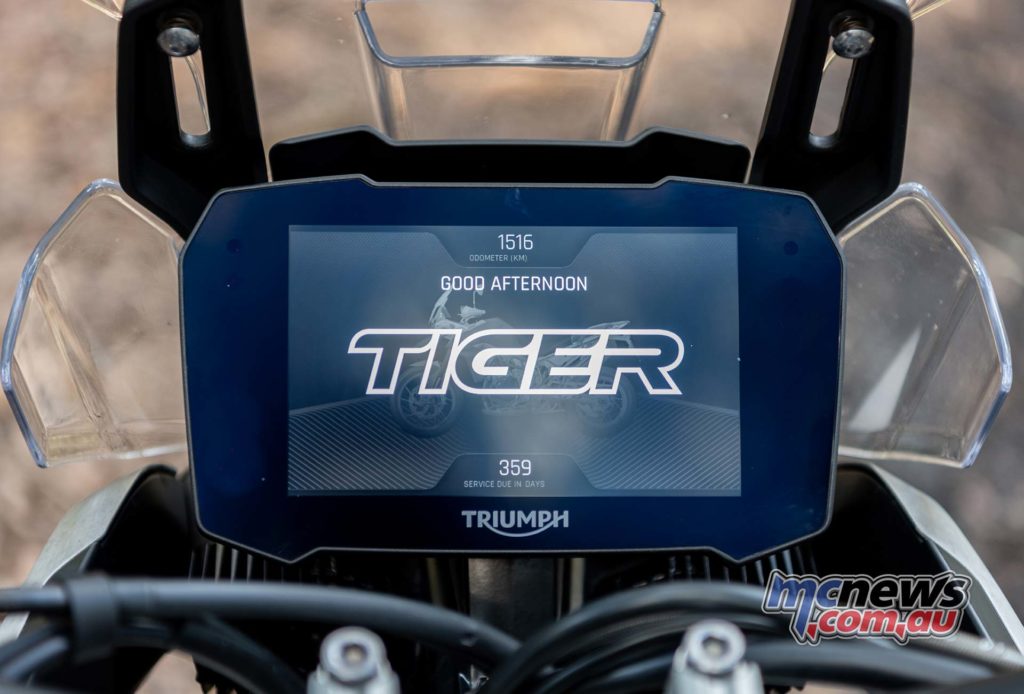
The multi-direction button becomes a bit of a pain in the arse. Yes there are four choices of layout, but three of them have two copies of a mirrored weird looking tacho.. Why would anyone want that? The fourth layout still has the one messed up tacho design. One well designed layout would be much better than four duds. Put useful info on the screen instead. Hell even the range to empty number doesn’t align properly at low range with the other numbers on that display screen.
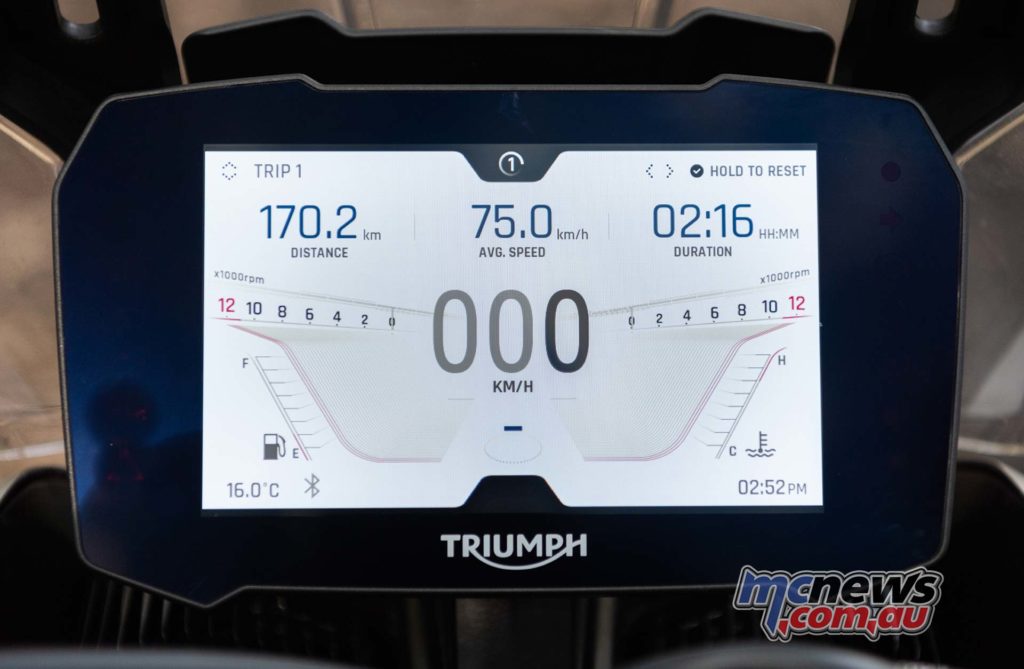
‘There’s no simple button to turn just the traction control off, it requires you to use the ‘Rider’ mode, which needs to be set up first. That is fine in itself I suppose, but to switch to it from say sport mode, you need to use a number of presses on the mode button, then confirm with a second button to activate it.. It shouldn’t be this hard for a bike with such a focus on going off road! And don’t reset everything and change the rider mode back to ‘Road’ every time I turn the key off – Leave it the way I bloody had it! I could go on. Triumph – I will design you a better dash and menu system. Seriously. Get in touch. They aren’t the only manufacturer failing with a multi directional type control on a TFT, but it’s as bad as I’ve seen.
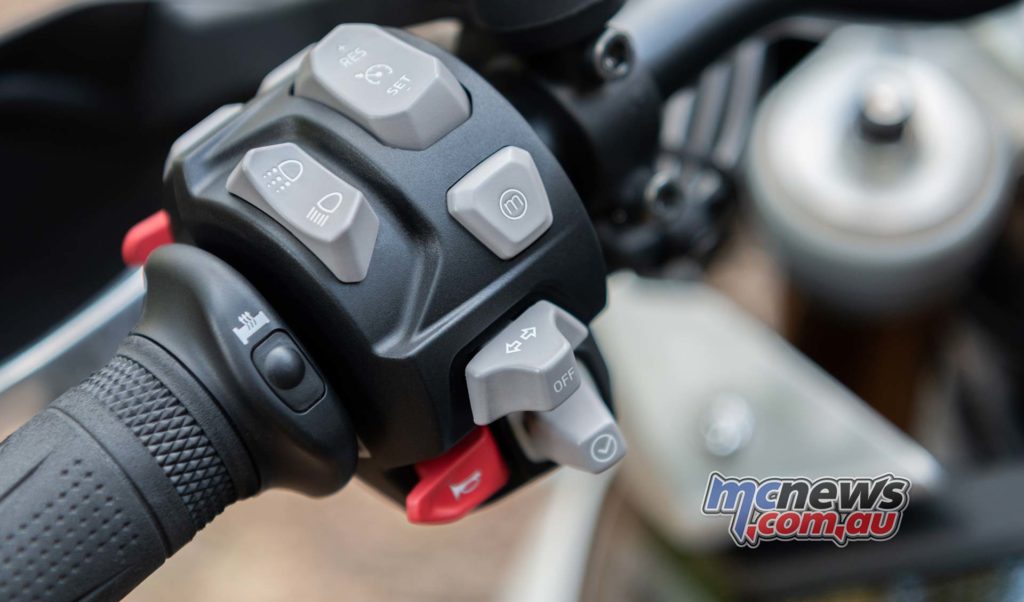
Now I’ll admit that I grew to ‘accept’ the annoyance of the dash layout, in the hope that it’s only a software update away from being improved. I’m an optimist after all. And to be fair it probably annoyed me even more because it stops the bike from scoring a pretty much perfect score! My only other gripe is that even when in neutral you still need the clutch to start it. Not sure when that became a thing, but it’s not a thing I want. Surely, the gearbox cut-out is enough. We’re not all bumbling idiots. Just more unnecessary stuff getting in the way.
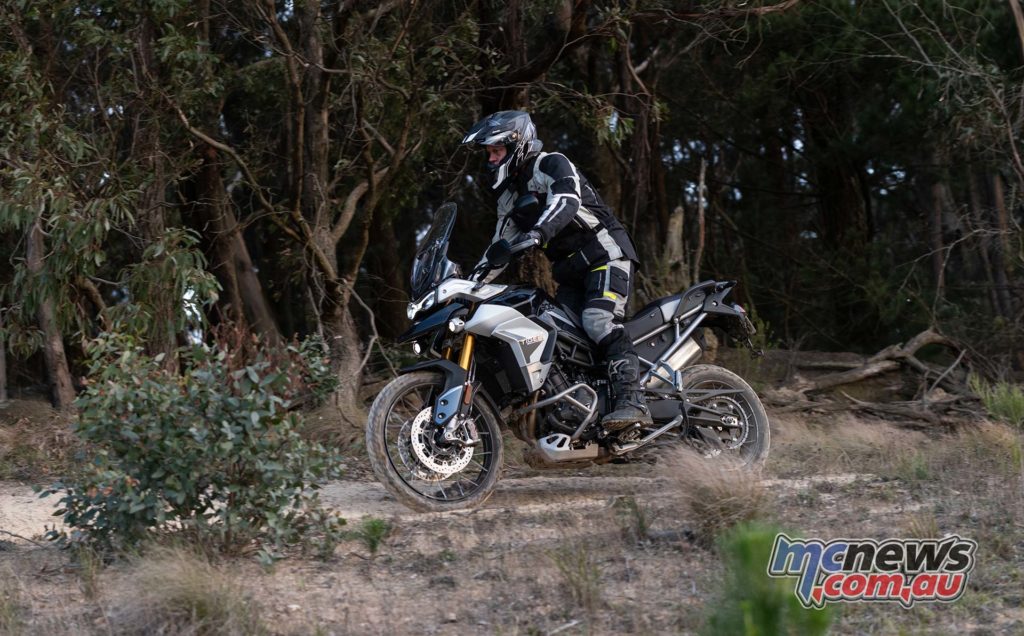
So where does that leave us? The original Tiger 800xc was an instant success when it launched. And for many, like myself, it leapt straight to the top of the middleweight adventure bike options. Subsequent updates from rival manufacturers had challenged that ranking but with the release of the new 900 Rally Pro, Triumph have once again produced a potential class leader in the hotly contested middleweight adventure bike category. It’s starting to get up there in price at just under $25k on road, but I don’t think it’s over-priced for what you get compared to its closest rivals (it comes standard with equipment that is a 4.5k option on the GS850 for instance – and that’s not including another couple of grand of equipment that you can’t get on the GS at all, the numbers are similar for the 790 Adventure R) . I’ve said it before, but we’re utterly spoilt for choice as riders right now.
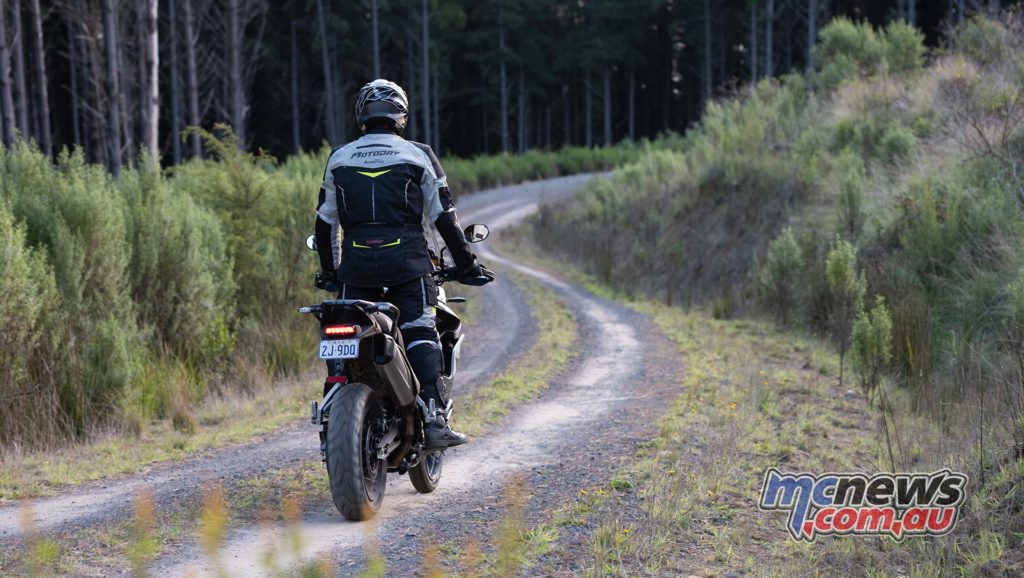
Enough writing. The suns out again. Time to go draw some wavy lines in the gravel before I have to give this beast back.

Why I like it
- The new 900cc engine with that uneven T plane crank. Just brilliant
- One of the best quick shifters around
- Overall chassis and suspension balance is near perfect
- Feels like its made for third gear slides!
- That engine and exhaust note… oof
I’d like it even more if
- That dash design needs a serious rethink. Triumph – get in touch, I’m happy to help
- Some of the switchgear positioning and controls could be better executed too
- That’s literally it. It really is that good. Triumph won’t notice if I drop my old 800xc back to them instead will they..? It’s worth a shot…
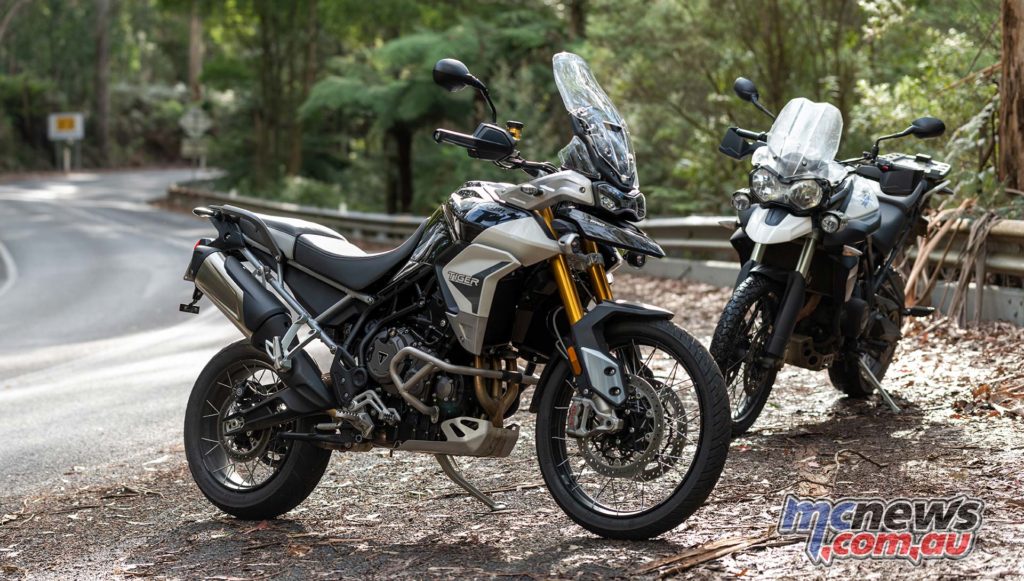
2020 Triumph Tiger 900 Specifications
| ENGINE & TRANSMISSION | |
|---|---|
| Type | Liquid-cooled, 12 valve, DOHC, in-line 3-cylinder |
| Capacity | 888 cc |
| Bore / Stroke | 78 mm / 61.9 mm |
| Compression | 11.27:1 |
| Power | 95.2 PS / 93.9 bhp (70 kW) @ 8,750 rpm |
| Torque | 87 Nm @ 7,250 rpm |
| System | Multipoint sequential electronic fuel injection |
| Exhaust | Stainless steel 3 into 1 header system, side mounted stainless steel silencer |
| Final Drive | O-ring chain |
| Clutch | Wet, multi-plate |
| Gearbox | 6 speed |
| CHASSIS | |
| Frame | Tubular steel frame, bolt on sub frame |
| Swingarm | Twin-sided, cast aluminium alloy |
| Front Wheel | Cast alloy, 19 x 2.5 in |
| Rear Wheel | Cast alloy, 17 x 4.25 in |
| Front Tyre | 100/90-19 |
| Rear Tyre | 150/70R17 |
| Front Suspension | Marzocchi 45mm upside down forks, non-adjustable |
| Rear Suspension | Marzocchi rear suspension unit, manual preload adjustment, 170mm rear wheel travel |
| Front Brakes | Twin 320mm floating discs, Brembo Stylema 4 piston Monobloc calipers. Radial front master cylinder, ABS |
| Rear Brakes | Single Single 255mm disc. Brembo single piston sliding caliper, ABS255mm disc. Brembo single piston sliding caliper, ABS |
| DIMENSIONS & WEIGHTS | |
| Width Handlebars | 830 mm |
| Height Without Mirror | 1410-1460 mm |
| Seat Height | 810-830 mm |
| Wheelbase | 1556 mm |
| Rake | 24.6 º |
| Trail | 133.3 mm |
| Dry Weight | 192 kg |
| Tank Capacity | 20 L |
| FUEL CONSUMPTION | |
| Fuel Consumption | 5.2l/100 km (55.4 MPG) |
| CO2 Figures | EURO 5 Standard: 119 g/km CO2 and fuel consumption are measured according to regulation 168/2013/EC. Figures on fuel consumption are derived from specific test conditions and are for comparative purposes only. They may not reflect real driving results. |





































